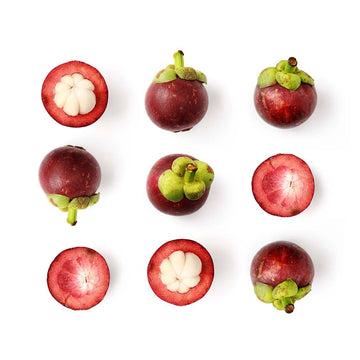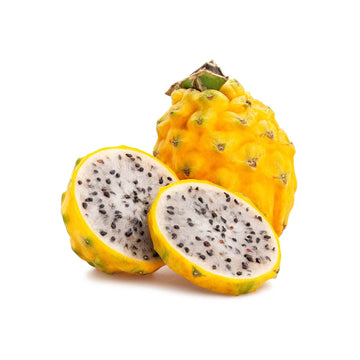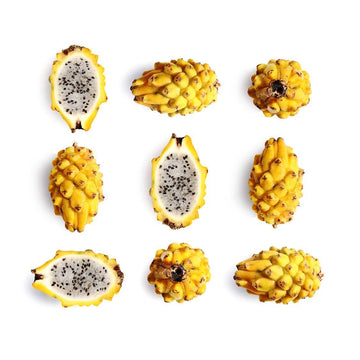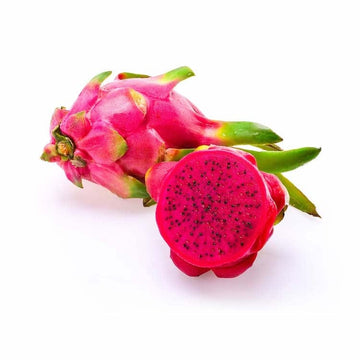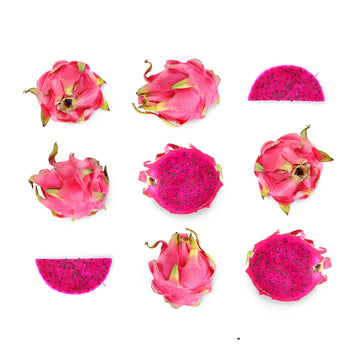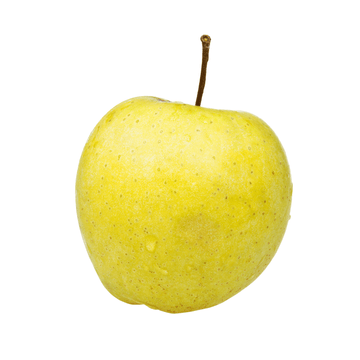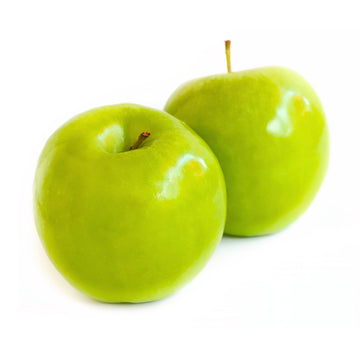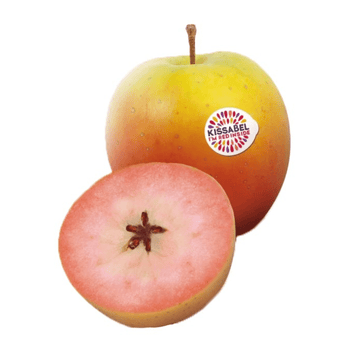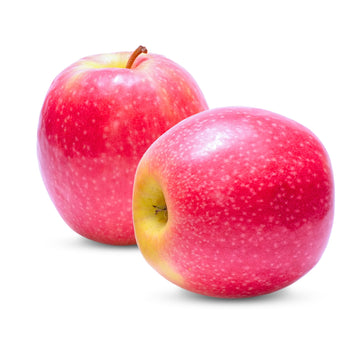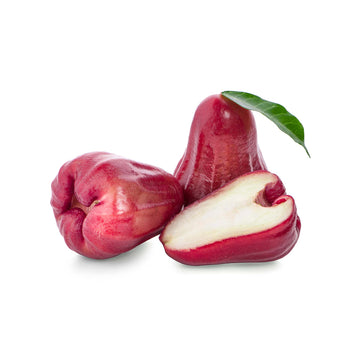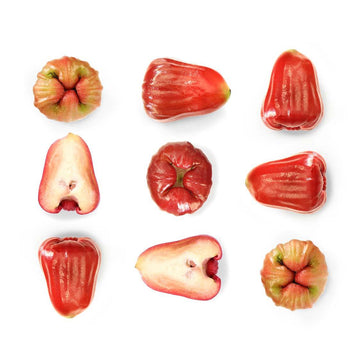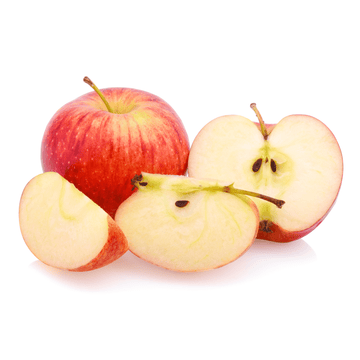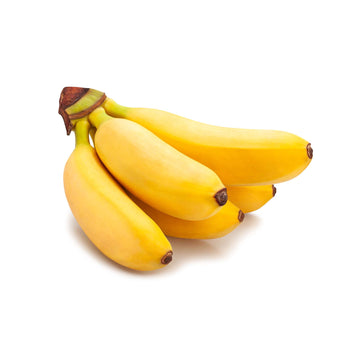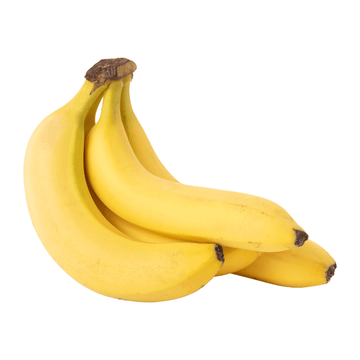The 10 Rarest and Strangest Exotic Fruits You Need to Try
Some exotic fruits are simply captivating, with their unusual appearances, unique flavours, and fascinating cultural histories. From spiky, alien-like shells, to unexpected colours of flesh, these fruits are not only compelling, but also a window into the biodiversity of the Earth. In this blog post, we explore ten of the rarest and strangest exotic fruits you absolutely need to try. Each fruit offers a distinct experience, from the custard-like sweetness of eggfruit to the explosive appearance of hala fruit. Let’s dive in and find out what makes these fruits so unforgettable.
1. Whiteberries

Country of Origin: Northern Europe, particularly Scandinavia
Description: Whiteberries, also known as white currants or white gooseberries in some regions, are small, white berries that belong to the Ribes genus.
They look like small strawberries, but with their colours inverted! The skin is pale white and glossy, whilst the tiny seeds embedded inside are red.
Unlike their red or black currant cousins, whiteberries are less common due to their specific growing conditions, requiring cool climates and well-drained soil.
Historically, they were prized in European gardens for their ornamental beauty and subtle flavour. In Scandinavian culture, whiteberries are sometimes used in traditional desserts or preserves, symbolising purity and simplicity.
Flavour and Texture: Whiteberries have a mild, sweet-tart flavour with a hint of floral notes, less acidic than red currants. Their texture is juicy and slightly crunchy due to the tiny seeds, making them refreshing when eaten fresh or blended into sauces and jellies.
Fun Fact: In some Nordic folklore, whiteberries were believed to be gifts from forest spirits, used in rituals for good fortune.
2. Breadfruit

Country of Origin: New Guinea and the Philippines
Description: Breadfruit (Artocarpus altilis) is a large, green, football-sized fruit native to the South Pacific, particularly New Guinea and the Philippines, and widely cultivated in tropical regions like the Caribbean and Southeast Asia.
Breadfruit has a bumpy, bright green skin that turns yellowish as it ripens. Its name comes from its starchy, bread-like texture when cooked.
Historically, it played a significant role in Pacific Island cultures as a staple food, often fermented to preserve it for years. The infamous mutiny on the HMS Bounty in the 18th century was partly due to the crew’s reluctance to leave Tahiti, where they were collecting breadfruit for transplantation. Today, it’s valued for its versatility and potential for food security.
Flavour and Texture: When cooked, breadfruit has a potato-like or freshly baked bread flavour, with a soft, starchy texture. Ripe breadfruit is sweeter, with a custard-like consistency that melts in the mouth. It can be roasted, boiled, fried, or baked into fritters.
Fun Fact: A single breadfruit tree can produce over 100 fruits, making it a vital resource in tropical regions.
3. Golden Dragon Fruit

Country of Origin: Central and South America, now cultivated in Southeast Asia and Australia
Description: Golden dragon fruit, a variety of pitaya (Hylocereus undatus), is a stunning cactus fruit with vibrant yellow skin covered in green scales, resembling a mythical creature’s egg.
Unlike the more common pink-skinned dragon fruits, the golden variety is rarer due to its specific growing requirements and limited cultivation.
Originating in the Americas, it has gained popularity in Southeast Asia and Australia for its striking appearance. In cultures where it’s grown, it’s often used in festive fruit trays or smoothies, symbolising prosperity. Its history traces back to indigenous use in Central America, where it was valued for its hydrating properties.
Flavour and Texture: If you're only familiar with red and white dragon fruits, the golden dragon fruit will be a surprise to your palate. It has a much stronger flavour than the more common varieties. It's sweet and mildly tangy, with a soft, juicy texture similar to kiwi. The seeds add a subtle crunch, enhancing the eating experience.
Fun Fact: The golden dragon fruit is not to be confused with the yellow dragon fruit (pitahaya), which has a more vibrant yellow-orange skin, and an even stronger and sweeter flavour.
4. Gac Fruit

Country of Origin: Southeast Asia, particularly Vietnam
Description: Gac fruit (Momordica cochinchinensis) is a small, melon-like fruit with a spiky, bright orange rind and deep red, oily pulp inside, giving it an otherworldly appearance.
Native to Southeast Asia, it’s especially revered in Vietnam, where it’s used in ceremonial dishes like sticky rice (xoi gac) for weddings and festivals due to its vivid red colour, symbolising luck and vitality.
Gac fruit has a short harvest season in the fall, making it rare and highly prized. Traditionally, it’s been used in Vietnamese medicine for its high antioxidant content, particularly lycopene and beta-carotene.
Flavour and Texture: The edible pulp has a mild, slightly sweet flavour reminiscent of cucumber, melon, and carrot. Its texture is soft and oily, often described as creamy. The seeds are typically cooked with rice or used in supplements, as they’re less palatable raw.
Fun Fact: Gac fruit contains up to 70 times more lycopene than tomatoes, making it an antioxidant-filled superfood.
5. Orange Watermelon

Country of Origin: Southern Africa, with modern cultivation in Japan
Description: Orange watermelon is a rare cultivar of the classic watermelon (Citrullus lanatus), originating in Southern Africa but popularised in Japan, where unique fruit varieties are a cultural fascination.
Unlike the familiar red-fleshed watermelons, or the lesser known (but still more common) yellow-fleshed watermelons, this variety is the rarest with a vibrant orange flesh but an unassuming green rind.
Historically, watermelons spread from Africa to Egypt over 4,000 years ago. Orange and yellow varieties actually existed before red varieties, but red watermelons were preferred simply due to their more vibrant appearance, and were popularised through selective breeding.
Today, orange watermelons are celebrated for their novelty and flavour.
Flavour and Texture: Orange watermelon is sweet, fresh and juicy, with a flavour similar to traditional watermelon but with a stronger sweet honey taste. Its texture is crisp yet succulent, making it a refreshing summer treat. The rind is also edible and used in pickling or stir-fries in some cultures.
Fun Fact: In Japan, a single orange watermelon can fetch high prices at auctions, especially if grown in an unusual shape.
6. Hala Fruit

Country of Origin: Polynesia, Southeast Asia, and Pacific Islands
Description: Hala fruit (Pandanus tectorius), also known as screwpine fruit, is a visually striking fruit that resembles an exploding planet with its fiery red-orange core and spiky, fibrous exterior.
Native to Polynesia and widely found in Southeast Asia, Hawaii, and other Pacific Islands, it’s a staple in Micronesian diets, especially on atolls.
The fruit consists of segments called keys or cones, which are tough and require effort to access the sweet pulp inside.
In Hawaiian culture, hala fruit is used in traditional medicine and woven into mats, while its juice is a delicacy likened to sugarcane and mango.
Flavour and Texture: The pulp is sweet, with a flavour profile blending mango and pineapple, and a thick, nectar-like consistency. The fibrous keys are chewy, often sucked for their juice rather than eaten whole.
Fun Fact: Only female hala trees bear fruit, while male trees produce fragrant pollen used as an aphrodisiac in early Hawaiian culture.
7. Kissabel/Redlove Apple

Country of Origin: France and Switzerland
Description: Kissabel and Redlove apples are modern hybrid varieties known for their striking red or pink flesh, which is a rarity among apples.
Developed in France and Switzerland through selective breeding, these apples have a vibrant exterior ranging from red to orange-pink, with a crisp, glossy appearance.
Their history is relatively recent, emerging from breeding programs aimed at creating red-fleshed apples that also have an exceptional taste. In European cultures, they’re celebrated for their beauty and flavour, often featured in gourmet dishes or eaten fresh. Kissabel apples are grown globally but remain rare due to limited cultivation.
Flavour and Texture: These apples offer a balanced sweet-tart flavour with berry-like notes, thanks to their high anthocyanin content. The texture is crisp and juicy, similar to traditional apples but with a denser bite. They’re ideal for salads, baking, or fresh eating.
Fun Fact: Kissabel apples contain up to 30% more antioxidants than standard apples, making them a nutritious choice.
8. Ice Apple

Country of Origin: India and Southeast Asia
Description: Ice apple, also known as tadgola, palmyra fruit, or toddy palm fruit (Borassus flabellifer), is a translucent, jelly-like fruit found inside the hard shell of the palmyra palm. These kernels of fruit look translucent white, similar to ice, hence the name "ice apple".
Native to India and Southeast Asia, it’s a summer delicacy in tropical regions, valued for its cooling properties. The fruit is harvested from the palm’s unripe drupes, revealing three to four gelatinous kernels.
In Indian culture, ice apples are associated with refreshment and are often sold by street vendors during hot months. Historically, the palmyra palm has been a “tree of life” in South Asia, with every part used for food, shelter, or crafts.
Flavour and Texture: Ice apples have a mild, sweet flavour with a hint of coconut water, and a soft, jelly-like texture that’s incredibly refreshing. They’re often eaten fresh or soaked in syrup for desserts.
Fun Fact: Ice apples are a natural electrolyte source, making them a popular hydration choice in tropical climates.
9. Eggfruit

Country of Origin: Central America and the Caribbean
Description: Eggfruit, also known as canistel or yellow sapote (Pouteria campechiana), is a vibrant yellow-orange fruit with a smooth, glossy skin and a striking egg-yolk-like interior.
Native to Central America and the Caribbean, it’s now cultivated in parts of Southeast Asia and Florida. Its rich, creamy texture has made it a favourite in tropical desserts. In Mayan culture, eggfruit was valued for its nutritional density and used in ceremonial foods.
Today, it’s often enjoyed in smoothies or custards, though it’s restricted in some regions like California due to import regulations.
Flavour and Texture: Eggfruit has a sweet, rich flavour with notes of eggnog and pumpkin pie, paired with a smooth, creamy texture akin to a hard-boiled egg yolk. Its dense consistency makes it ideal for baking or blending.
Fun Fact: The fruit’s vibrant colour and unique flavour make it a standout in tropical fruit markets.
10. Wood Apple

Country of Origin: Indian Subcontinent and Southeast Asia
Description: Wood apple (Limonia acidissima), also known as kudbel fruit, is a hard-shelled fruit with a rough, woody exterior that resembles a small coconut.
Native to the Indian subcontinent and Southeast Asia, it’s deeply rooted in Indian culture, where it’s used in religious rituals and Ayurvedic medicine for its digestive benefits.
The fruit’s pulp is scooped out after cracking the shell, revealing a brown, sticky interior with small seeds. In India, wood apple is often made into sherbet or chutney, especially during festivals. Its rarity outside its native regions is due to its short shelf life and specific growing conditions.
Flavour and Texture: The pulp has a tangy, sweet-sour flavour with a musky, fermented undertone, often compared to tamarind or dried fruit. The texture is sticky and grainy, requiring mixing with water or sugar for palatability.
Fun Fact: In Hindu tradition, wood apple is offered to Lord Shiva, symbolising spiritual cleansing.
Conclusion
Exploring these rare and strange exotic fruits is a journey into the heart of global cuisines and cultures. You can shop all these fruits, plus explore hundreds more, at exoticfruits.co.uk. Which one will you try first?


